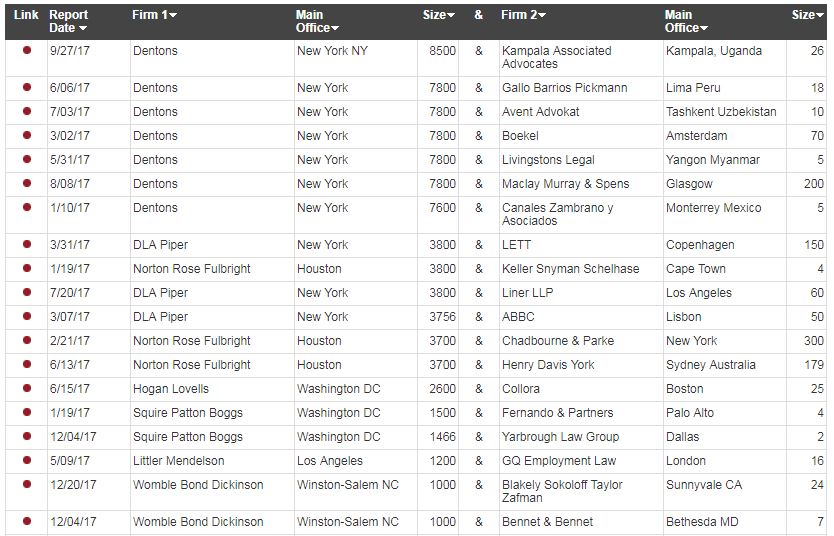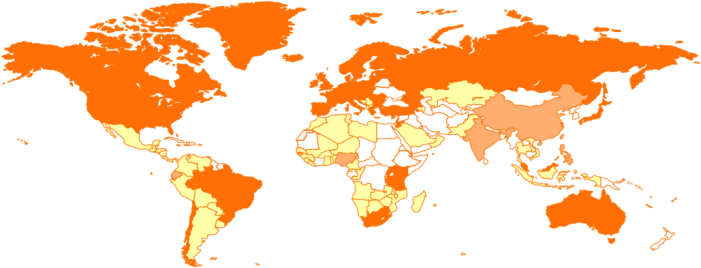The $85B proposed merger between AT&T and Time Warner, currently discussed in the American courts, is as complex as exciting. Exciting because it may bring increasing competition against Amazon and Netflix. Complex because the integration of the business processes, cultures and teams from each organization will be of a monumental scale.
Mergers and acquisitions are nothing new for technology companies: for example, Cisco has literarily acquired hundreds of small firms since 1993. Facebook has acquired 66 companies, including Instagram and Whatsapp, since its inception, and Amazon has bought a dozen just in the last two years.
Legal firms have historically been less prolific. However, data from Altman Weil, a leader in legal consulting, indicates that there were over 100 law firm mergers in 2017, more than double the amount of mergers ten years ago.

Largest 2017 mergers between law firms. Altman Weil.
Although it is likely that the bigger size will bring economies of scale from their customers’ perspective, merely growing in size does not automatically mean that law firms will provide better service. Nevertheless, it is no secret that mergers tend to fail. KPMG shows in this study that 83% of mergers do not boost shareholder return. According to Gartner, some of the challenges that M&A bring for these firms are related to:
- Systems and processes
- Asset management
- Workforce challenges
In my experience these areas are interweaved. For example, employees can find it very frustrating to communicate with the newly-arrived team or their customers if the collaboration and communications systems have not been integrated across the different platforms. Other times, even if the systems may be ready from a technological point of view, from the user experience and user adoption points of view, employees may dismiss them due to complexity.
With global scale comes additional challenges, as legal firms require the same support and experience anywhere and everywhere.

Open Videopresence

Orange global coverage
Today, the Orange global coverage serves many of the top legal firms in the world, as well as hundreds of multinationals in other industries. Our Open Videopresence solutions are cloud based and offer agile integration between many environments, such as Cisco Spark and Microsoft. From 20 to 1,000 rooms, at Orange we know a thing or two about how to integrate your work environment to facilitate use and encourage adoption of your videoconferencing solution. Software upgrades, latest generation hardware, change management and more – all are managed by Orange.
Our 50+ people strong Helpdesk team provides support via a single number: IT support and Concierge are available 24 hours a day, 7 days a week, to provide end-user assistance in several languages. Would you like to add or remove a participant or extend the duration of your videoconference? No problem whatsoever, the Orange Concierge can do that for you, too.
To discuss cloud-based videoconferencing services, contact Javier on Javier.Sanz-Blasco@orange.com

Javier holds an MBA at Henley Business School (UK) and has more than 20 years’ experience in Unified Communications. He currently works as Sales Executive at Orange, where he maps the business requirements of the biggest multinationals to a service. An avid reader and former chess player, he enjoys hiking with his family the mountains of Picos de Europa in Spain and long distance running along the Thames River.